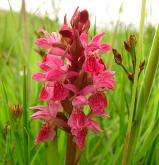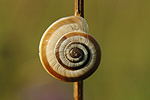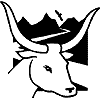HNV Showcases
Islay – more than whisky
Extensive grazing systems

Golden eagle nest sites are located in the most remote places. They are extremely sensitive to disturbance during the Spring (when the female is incubating). They often nest on huge cliffs with the nest protected by overhanging rocks.
Marsh orchid – Dactylorhiza incarnata

Marsh fritillary (Euphydryas aurinia) depend on a vegetation mosaic that includes short swards (5-14 cm) and the presence of the larval food plant Devils bit Scabious (Succisa pratensis). Islay is one of the few remaining strongholds of this Annex II species in Europe and this is largely due to the long history of pastoral management. Because of the large areas of suitable vegetation (here on a landscape scale) a viable meta-population has survived.
The butterfly is on the wing for a short period in May and June. Large batches of eggs are laid on the underside of Succisa leaves. In July and August when the larvae are still tiny they construct a tent from leaves and silk and live within this structure. Hibernation starts early and the half-grown larvae spend the winter together in a silken web deep in the vegetation. After hibernation they are still gregarious and bask in sunshine on plants. They become fully grown in May and pupate for 3 to 4 weeks.

The butterfly is on the wing for a short period in May and June. Large batches of eggs are laid on the underside of Succisa leaves. In July and August when the larvae are still tiny they construct a tent from leaves and silk and live within this structure. Hibernation starts early and the half-grown larvae spend the winter together in a silken web deep in the vegetation. After hibernation they are still gregarious and bask in sunshine on plants. They become fully grown in May and pupate for 3 to 4 weeks.

 Because cattle graze much less selectively, grazing semi-natural vegetation with both cattle and sheep can optimise plant biomass production and lead to biological enrichment.
Because cattle graze much less selectively, grazing semi-natural vegetation with both cattle and sheep can optimise plant biomass production and lead to biological enrichment. Highland cattle, with their large rumens and “natural” grazing behaviour are very efficient at reducing course vegetation and ranging over wide areas and difficult terrain.
 „Free-ranging“ livestock act as an important vector for the dispersal of plant seeds and small invertebrates (e.g. snails, grasshoppers), whose mobility is very restricted, irrespective of otherwise adverse conditions.
„Free-ranging“ livestock act as an important vector for the dispersal of plant seeds and small invertebrates (e.g. snails, grasshoppers), whose mobility is very restricted, irrespective of otherwise adverse conditions. 
Throughout the Hebrides and across much of Islay, hill pastures include extensive areas of blanket bog.
The very wet Eriophorum and Sphagnum moss areas are often precarious places for stock.
These places are rich in bog mosses, liverworts and several insectivorous plants (Drosera ssp., Utricularia sp. and Pinguicula ssp.) as well some spectacular dragonflies.


